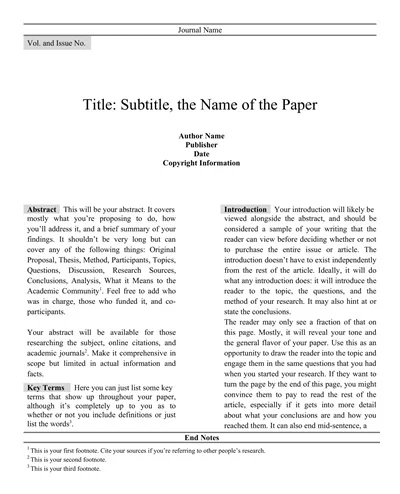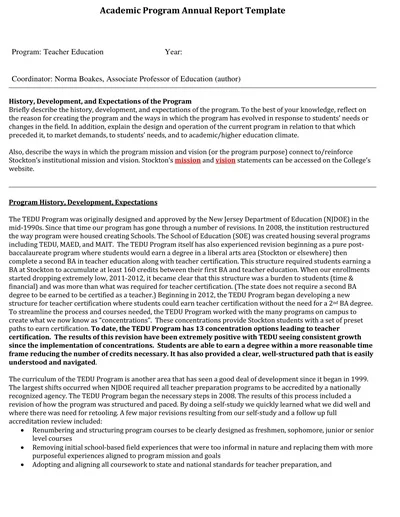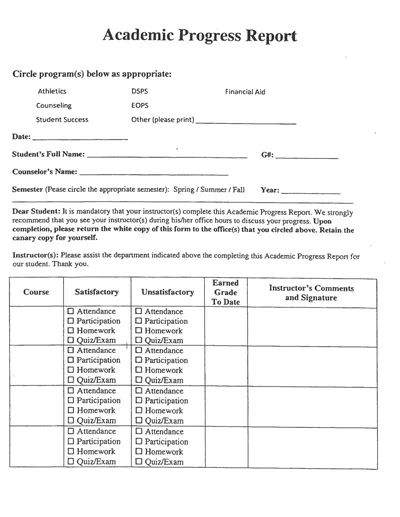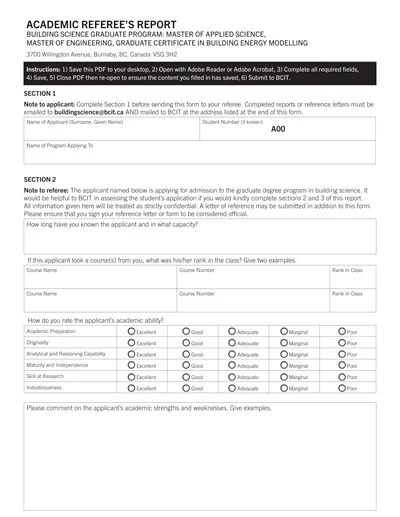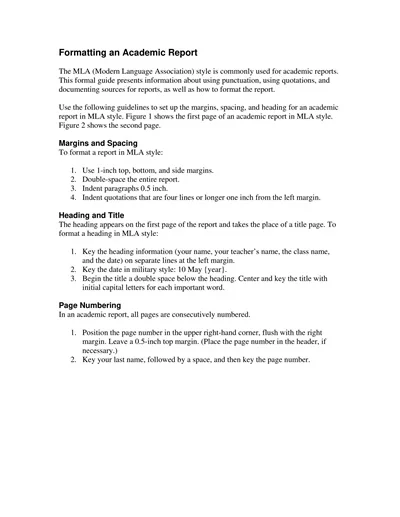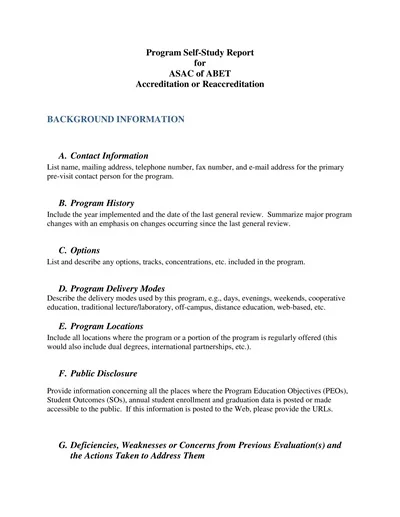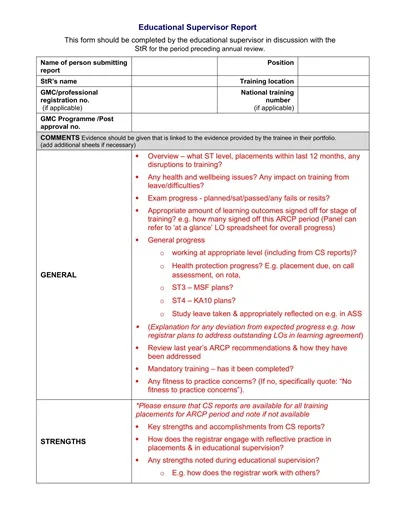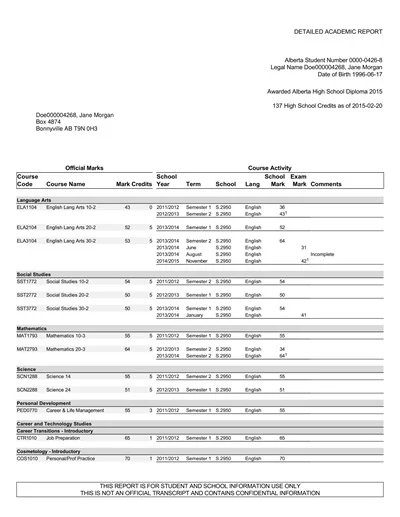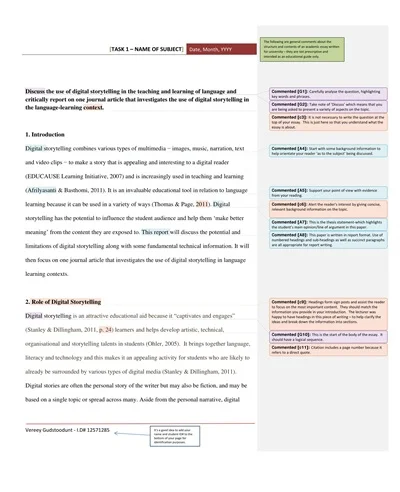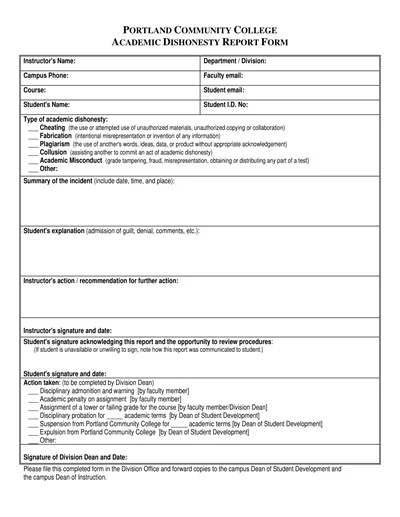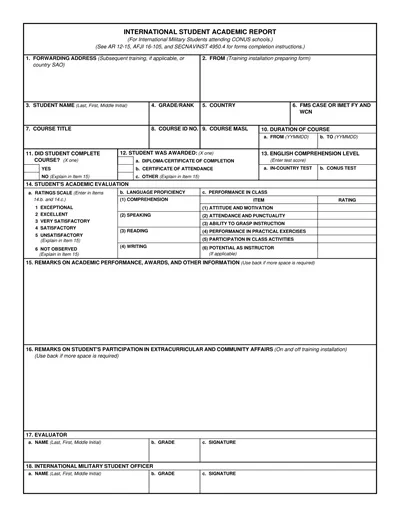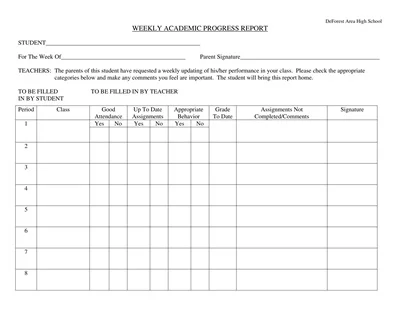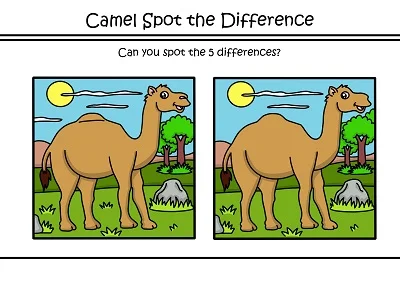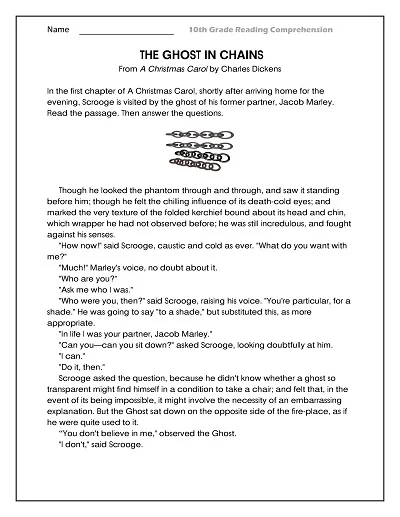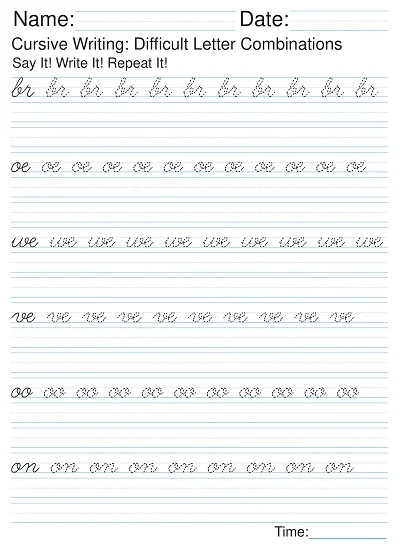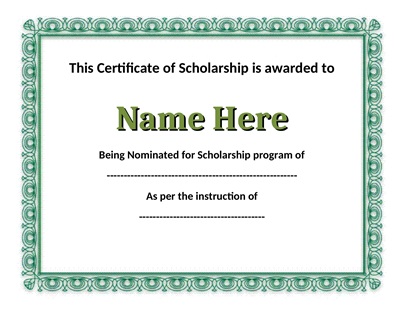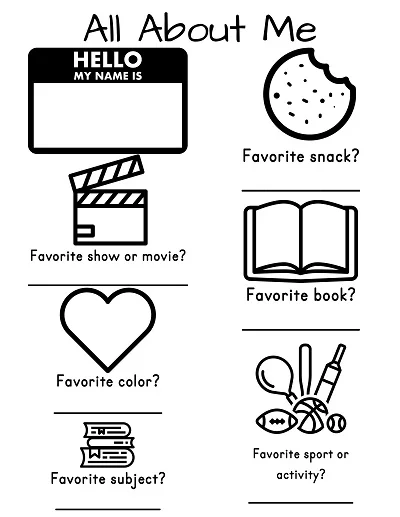An Academic Report Template is a blueprint that has been created to assist students or researchers in presenting their information in a well-ordered and neat manner that will meet the required standard of professionalism.
The most common sections will be the title page, abstract, introduction, methodology, results, discussion, conclusion, and references. It helps to guarantee that all relevant data is incorporated and analyzed sequentially, which helps the reader grasp the research done.
What is an Academic Report?
Academic Report is formal and systematic, presenting information and research on a topic or issue. In an educational context, it is frequently employed to gauge a student’s comprehension of a given topic or study endeavor.
It is common for this type of report to have a highly organized and official format that often includes an introduction, literature review, methodology, results, discussion, and conclusion section.
It should, therefore, be understood that the writer considers the creation of an Academic Report not only as a means to present research findings but also as an opportunity to show that he/she can address a subject logically, evidence-based, and critically.
Types of Academic Reports
It is important to note that academic reports can be of various types and have different objectives; therefore, the report’s structure, analysis, and presentation may vary. Below are some of the most common types:
1. Laboratory Reports
These reports outline the methods used, observations made, and the results from investigations carried out in a laboratory. They often include:
- Abstract
- Introduction to the experiment
- Specification of the method used in conducting the experiment
- Outcome with conclusion and findings
- Discussion analyzing the results
- Conclusion A brief conclusion that will summarize the results of the study and drawing implication.
- References
2. Research Reports
Comprehensive reports of research findings, including results, conclusions, and recommendations. Key components include:
- Who and what have researched/who has done the summarization of the research The research under consideration has been done/summarized by Huntington.
- While conducting the research, the researcher should provide an introduction that overviews the research question and objectives.
- Literature Review analyzing prior work done on the same subject.
- Methodology delineating how the research process was carried out
- Conclusion section containing the study outcomes
- To the discussions analyzing the consequences of the outcomes.
- Conclusion providing a summary and indicating directions for future research.
- Works cited where one is bound to find the sources used
3. Business Reports
These reports involve investigating a business situation or a market with a view to making suggestions for further action. Components often include:
- Executive Summary gives the summary of the findings of the report.
- The executive summary briefly describes the purpose of the report
- History which sets the scene for the event
- Market Analysis consists of research information regarding the market or the industry.
- Pro Forma Balance Sheet showing the financial condition or impact
- Based on the results of the analysis, it is possible to provide recommendations that would mean a definite line of action.
- Conclusion A brief summary of the report and recommendations.
- Appendices, including supplementary material
- References
4. Book Reports
Generic writing pieces capture a given book’s meaning, purpose, and characters. Essential elements:
- Welcome to our book, titled “…”, written by …It presents…
- Summary of the plot
- Analyze the Principal Characters explaining personalities and changes of the principal characters
- Themes Analysis focusing on the themes of the book
- Personal Evaluation allows the student’s opinion regarding the book and the lesson learned from it.
- Conclusion: Summarize the thoughts and connect them with the analysis.
5. Technical Reports
Documents that give minute information about the procedures, development, or outcome of technical and scientific work. Key sections include:
- Conclude the report in the Abstract
- In the case of this research, an introduction where the research question or problem is stated.
- Literature presenting previous knowledge on the topic or setting that contributes to the background.
- Methodology for describing how the study was conducted
- Positive studies depicting what was discovered
- Discussion interpreting the findings
- The Conclusion and Recommendations should present findings and solutions or recommendations that have been made, respectively.
- Endnotes recounting the sources employed in the report
Contents of an Academic Report
Here are some contents of an Academic Report:
- Introduction
- Introduction: State of the art of the research theme
- Objectives of the study
- Significance of the research question
- Literature Review
- The literature that has been reviewed includes bibliographical studies that have been published on the topic.
- Recognition of the existing knowledge gaps
- Theoretical framework justifying the study
- Methodology
- Description of research design
- Handwritten notes regarding data acquisition methods with intent for survey, interview, or experiment.
- Description of all the stages of analysis of the data collected
- Results
- This produces a structure in which to present findings.
- Utilizing charts, graphs, and tables to present the conclusion of the data.
- Making a conclusion and interpretation of the results.
- Discussion
- Comparing results to expectations and prior studies
- Description of the implications of the findings
- Acknowledgment of limitations of the study
- Conclusions and Recommendations
- Conclusions will be provided, with a briefing of the major findings and why they are vital.
- Suggestions for future research
- Implications of the study for practitioners or policymakers in their practice, informed by the theoretical framework.
- References
- An alphabetical list of all the sources used in developing the report and elaborate information about them.
- Appendices
- Extra material forms the basis of the research (for instance, survey questionnaires, detailed tables, and technical data).
Why to Prepare an Academic Report?
There are several good reasons why preparing an academic report is crucial. First, it provides a comprehensive structure of research results, thus, making complex information comprehensible. Besides, it is important to note that a scholarly report is also important in assessing the research process and painting a picture of the methods used, the investigation conducted, and the conclusion made.
This type of documentation is important because it holds accountability for credibility and accuracy in an academic setting, encouraging discourse among scholars. Lastly, it greatly enhances a student’s learning and development processes, sharpening the analytical, writing, and critical thinking skills that are useful in their academic and career aspects.
What are the Uses of an Academic Report?
Academic reports have the following important roles to play in educational and research institutions as they present information, analyses, and findings in a more systematic manner.
Here are some of the key usages of an academic report:
Knowledge Dissemination
Research findings, hypotheses, and cases are disseminated through academic reports for the use of the scholarly community. It allows researchers to add to the knowledge base of a subject area, encouraging further work and debate.
Educational Assessment
In educational settings, assessment reports refer to documents that may be compiled in order to evaluate students’ grasp of a particular concept. The benefits that can be gained are numerous, especially the possibility of modifying assignments to allow instructors to assess the students’ critical and analytical thinking, as well as their research and problem-solving skills focusing on the practical application of the gained knowledge.
Policy Development
They play an important role in the decision-making process of both political and non-political organizations, including government and NGOs, and academic reports. It is also can be pointed out that research findings can shed light on some social problems, economic indications, or environmental concerns that may help in formulating new policies or improving the current ones.
Professional Practice offered
For instance, accomplished engineers, medical practitioners, and business people rely on academic reports for information on the latest research, findings, and advancements in their specialties. The information described below is of paramount importance for the process of Cpd[2] and the quality of services that are delivered.
Writing Tips for Academic Reports
To produce a concise and effective academic report, it is necessary to adhere strictly to its format and keep a clear writing style. Here are some practical tips to guide you:
- Start with a Clear Outline: Always draw a framework of the ideas you will present in the paper so that the flow of information is coherent. This should consist of your introduction, main body that is subdivided into sections and sub-sections, conclusion, and appendices, if any.
- Adhere to Guidelines: Always adhere to any general rules set by the respective institution or instructor, particularly regarding the use of format, citation styles of the work such as APA, MLA, or Chicago, and word limit.
- Use Formal Language: Writing academic papers should involve using formal language. Do not use informal terms, slang, or shortened forms of words such as don’t, can’t, etc. It is important to be very careful with the words in your text.
- Incorporate Evidence and Citations: Back up the arguments presented by including verifiable information, and make sure to cite these sources appropriately. This also goes a long way in enhancing your report and simultaneously eliminating cases of plagiarism.
- Keep Paragraphs Focused: Each of these should contain one idea only, which can be then backed up with evidence and explanations. This clear thought pattern helps to make your report easier to follow.
- Revise and Edit: Combing over is important. Once you have written your draft, make sure it flows well and is free from minor writing errors, including grammatical punctuation and spelling. Ask others, such as peers or mentors, to review your writing if possible.
- Include Visuals If Applicable: Charts, graphs, and tables are very useful for presenting information at a glance or portraying trends. Make sure that they are properly labeled and documented in the text.
Thus it can be summarized that the general principles of good writing consist of proper research, proper structure, proper choice of words, and proper editing.
How to Create an Academic Report Template
The most important steps in preparation of an academic report template include the following:
1. Title Page
Commonly, this report’s title page should contain the report’s title, the author’s name, the institution’s name, and the date of submission. The rules here should be followed by the latter, as expressed by the requirements of the specific educational institution or the guidelines of a particular academic journal.
2. Abstract
An abstract is a brief summary of the report – it is around 150-250 words long, depending on the requirements of the report. It should provide a brief overview of the report, how it was done, what was discovered, and what the authors believe to be true.
3. Table of Contents
It means that if the report contains plenty of information, it must be provided with a table of contents. It should provide the list of all the sections included in the report and the page numbers of the appendices.
4. Introduction
The objectives and goals of the report should be stated in the introduction section, along with the background information on the topic and the research question or hypothesis. This forms the background for the rest of the report.
5. Methodology
This part explains how the study was carried out, together with information on the type of materials used, the steps followed in the research process, and how the data was analyzed. It should be detailed enough for another person to conduct the study/ The data collected should be valid.
6. Results
This is where you are required to describe the research findings in relation to the study’s objectives and support them with figures, tables, and text. Stick to the facts, not give personal opinions, and concentrate on the information gathered.
7. Discussion
Discuss how one should understand and explicate the results in this section. Review your results from prior research works, highlight the disparities, and make recommendations for future research.
8. Conclusion
Conclude by restating some of the main findings and explaining their implications in the study. Finally, the research question will be briefly restated in terms of the manner in which the findings were relevant and the study’s contributions emphasized.
9. References
Provide all sources used in the report in the References or Bibliography section at the end with the citation style depending on the institution’s requirements or the publishing company in use (for instance, APA, MLA, Chicago).
10. Appendices
Put any extra information that does not belong to the body of the paper, like raw data sets, computations, checklists, etc., in the appendices. Such documents should be cited in the body of the report where applicable.

